PRESENTATION: Kiki Kogelnik-Tiden Er Inde
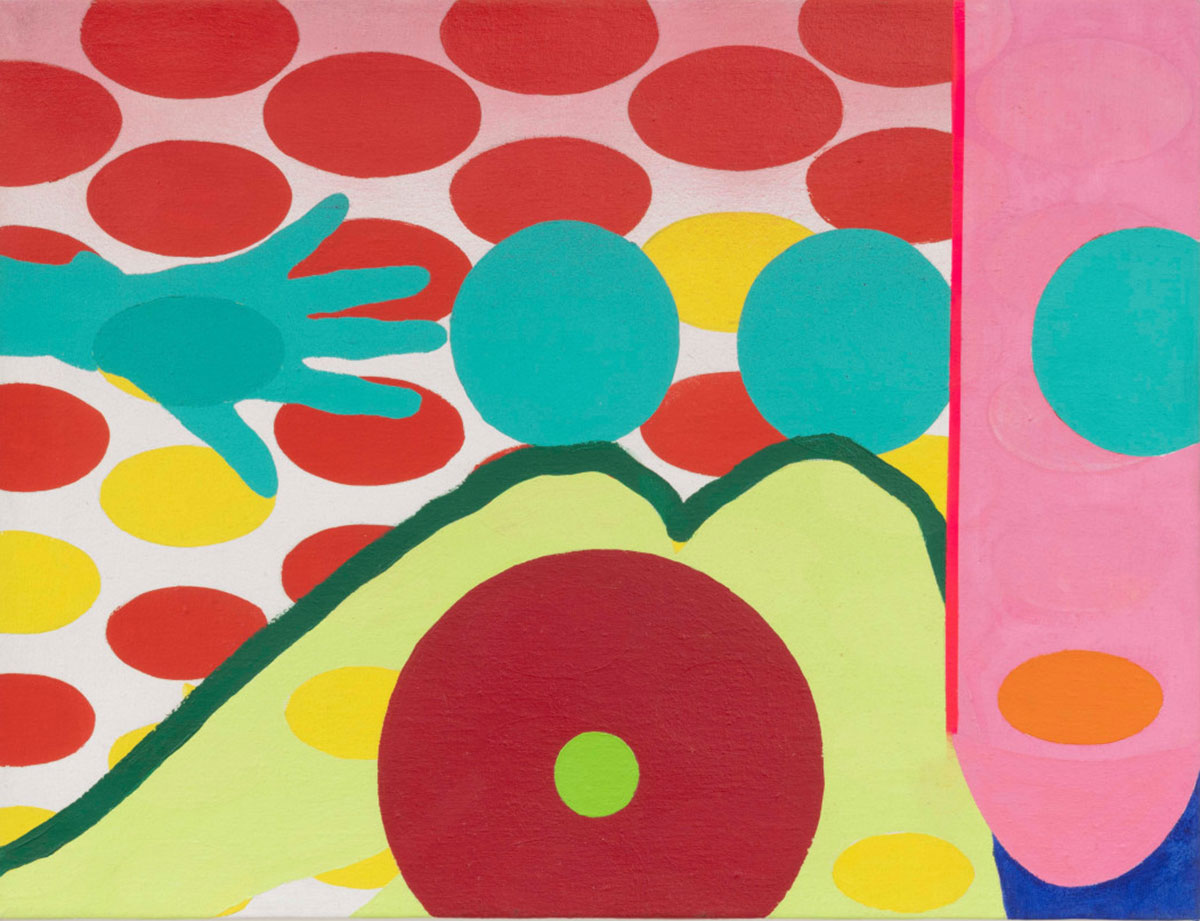 Kiki Kogelnik is one of the most sensational artists to emerge from the experimental art scene of the 1960s. Her life’s work contains a deep fascination with everything that is new. Space travel, the boundary between man and technology and the roles we assign to ourselves and each other are just some of the topics she revolves around – and which also occupy us today.
Kiki Kogelnik is one of the most sensational artists to emerge from the experimental art scene of the 1960s. Her life’s work contains a deep fascination with everything that is new. Space travel, the boundary between man and technology and the roles we assign to ourselves and each other are just some of the topics she revolves around – and which also occupy us today.
By Dimitris Lempesis
Photo: Art Museum Brandts Archive
With the title “Kiki Kogelnik – Tiden Er Inde”, Kunstmuseum Brandts presents for the first time in Denmark a retrospective exhibition with Kiki Kogelnik’s works, divided into all periods and media of the artist’s work. Kiki Kogelnik instated the movements of European abstract modernism and American Pop art to create a unique, forward-looking oeuvre that addressed new technologies and feminism. Incorporating a variety of often synthetic materials, irony and humor, her paintings and sculptural work typically took their point of departure in the human body, presenting it as variously ebullient, stylized, interchangeable, fragmentary or skeletal. Born in Austria in 1935, Kogelnik studied at the Vienna Academy of Fine Arts before widely traveling through Europe. In Paris, she became involved with a group of American artists including Joan Mitchell and Sam Francis. Following her move to New York in the early 1960s, she abandoned her abstract expressionist style in favor of paintings and assemblages directly inspired by recent advances in robotics and space travel. Working alongside a group of artists loosely associated with the Pop art movement: Jasper Johns, Roy Lichtenstein and Andy Warhol were among her friends-Kogelnik became widely known for her series of “Hangings”, in which silhouettes of friends were cut out and hung on hangers and rails, or stenciled onto canvas as hollow skin. Later works increasingly addressed fashion in connection to the way women were portrayed in advertisements. In a life and career that encompassed multiple continents, disciplines and movements (both political and aesthetic), there was one constant in the work of Kiki Kogelnik: the body. Through her tracings, cutouts and paintings of the human figure, Kogelnik captured the silhouette of contemporary society and its ever-shifting ambitions and concerns. At once buoyantly glamorous and deeply sincere, Kogelnik’s practice reflected the discordant aura of the decades that followed the Second World War-a period marked by both achievement and upheaval, trauma and rebirth. Indeed, Kogelnik, born in Austria but living and working in New York for most of her life, was moved by both humanity’s ability to send a man to the moon as well as its capacity for nuclear annihilation. Some of the earliest works in the exhibition highlight Kogelnik’s fascination with the technological advances made in computing. Created with body tracings and anatomical stamps, these works dating from the mid- to late-l 960s show android-like figures intermingled with circuit boards, wires and pieces of machinery. Not only do these works reflect the innovations (and imaginations) spurred on by the digital revolution of the 1950s and 1960s, but they also emphasize Kogelnik’s interest in fields where women were largely excluded or marginalized. In the 1970s, Kogelnik began making a series of paintings using imagery appropriated from fashion advertisements, thereby issuing a critique of the representation of femininity by mimicking its very archetype in the mass media: stylish consumers of fashion who, in their statuesque poses, become themselves objects for consumption. In its figurative detail and adoption of appropriation strategies, works like Dynamite Darling represent a distinct departure from the body tracings of the previous decade, where only the silhouette of the human form is given. The latest piece in the exhibition is a 1986 sculptural installation from her “Hangings” series tided “Divided Souls”. Here, Kogelnik gives three-dimensional form to her tracings, using them as templates for vinyl cutouts suspended from a steel garment rack. Inspired by the racks of clothing being pushed on the streets in front of her Garment District studio, the sculpture is a tongue-in-cheek interpretation of the “hanging of art” while also making a comment on the marketplace of culture and its parallels to the fashion industry.
Photo: Kiki Kogelnik, Untitled (Pink Bomb), c. 1964, Oil and acrylic on canvas, 20 x 26 1/4 in. 50.8 x 66.7 cm, © Kiki Kogelnik Foundation, Courtesy Kiki Kogelnik Foundation & Art Museum Brandts
Info: Art Museum Brandts, Amfipladsen 7, Odense, Denmark, Duration: 19/8/2023-14/1/2024, Days & Hours: Tue-Wed & Fri-Sun 10:00-17:00, Thu 10:00-21:00, https://brandts.dk/
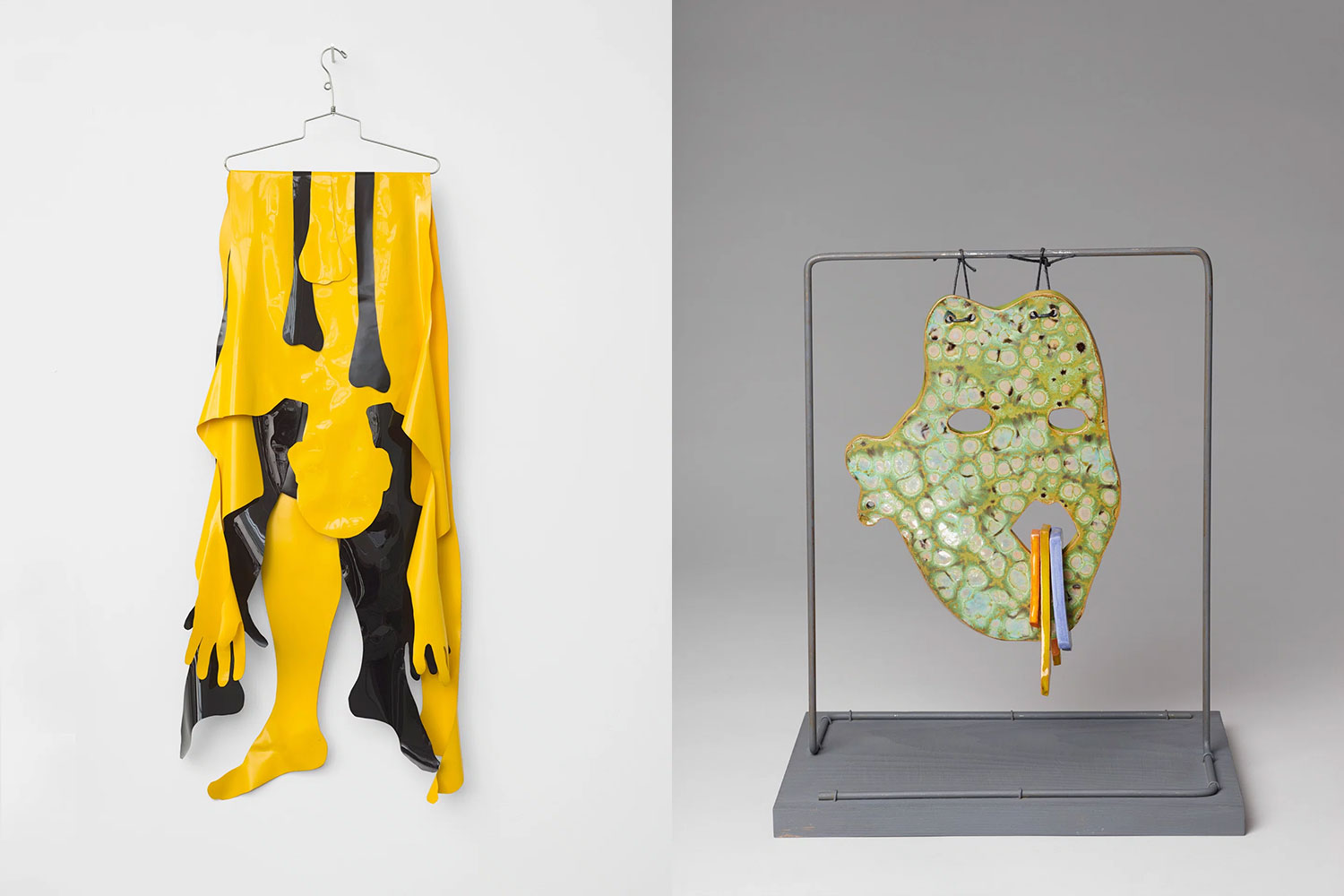
Right: Kiki Kogelnik, I Talk Too Much, c. 1986, Glazed ceramic and wire on painted wood, 14 5/8 x 8 7/8 x 11 3/4 in. (37 x 20.2 x 30 cm), © Kiki Kogelnik Foundation, Courtesy Kiki Kogelnik Foundation & Art Museum Brandts
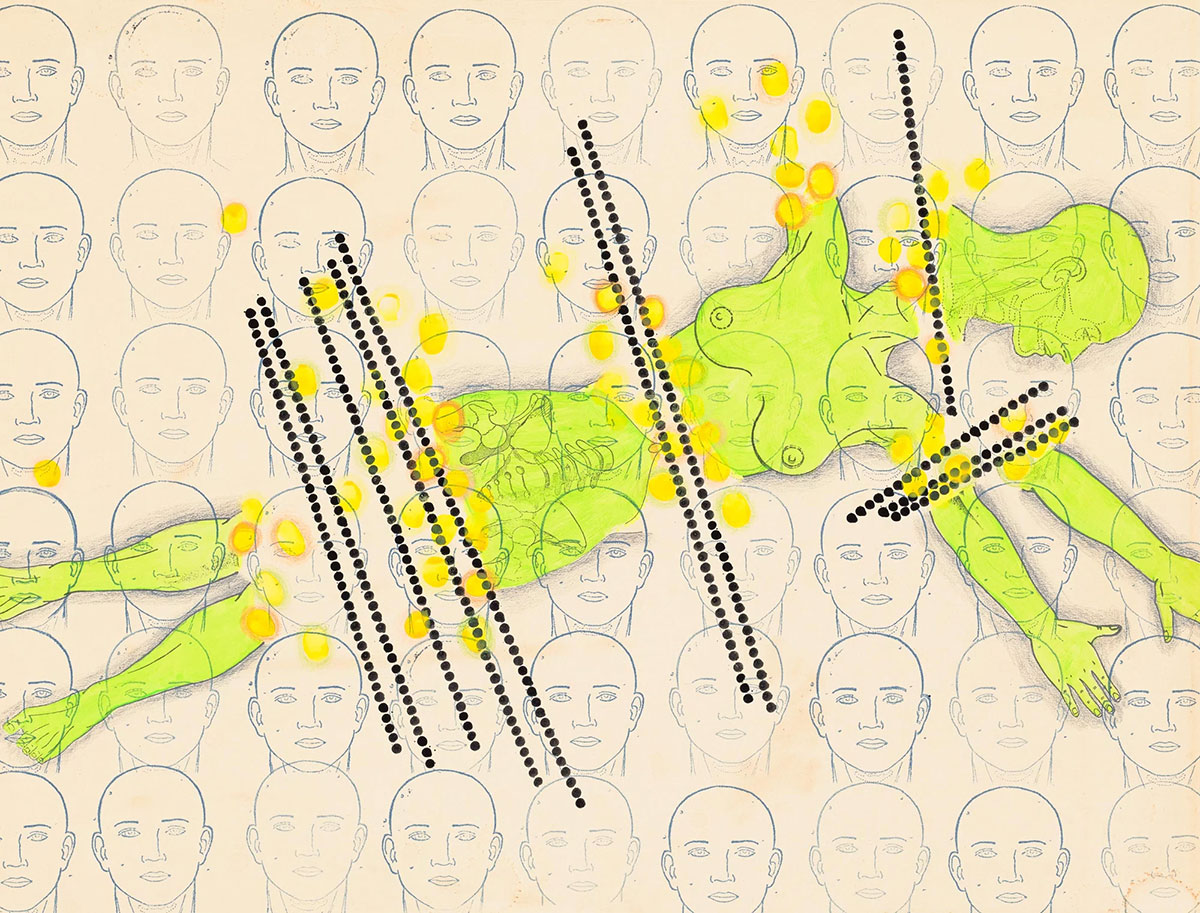
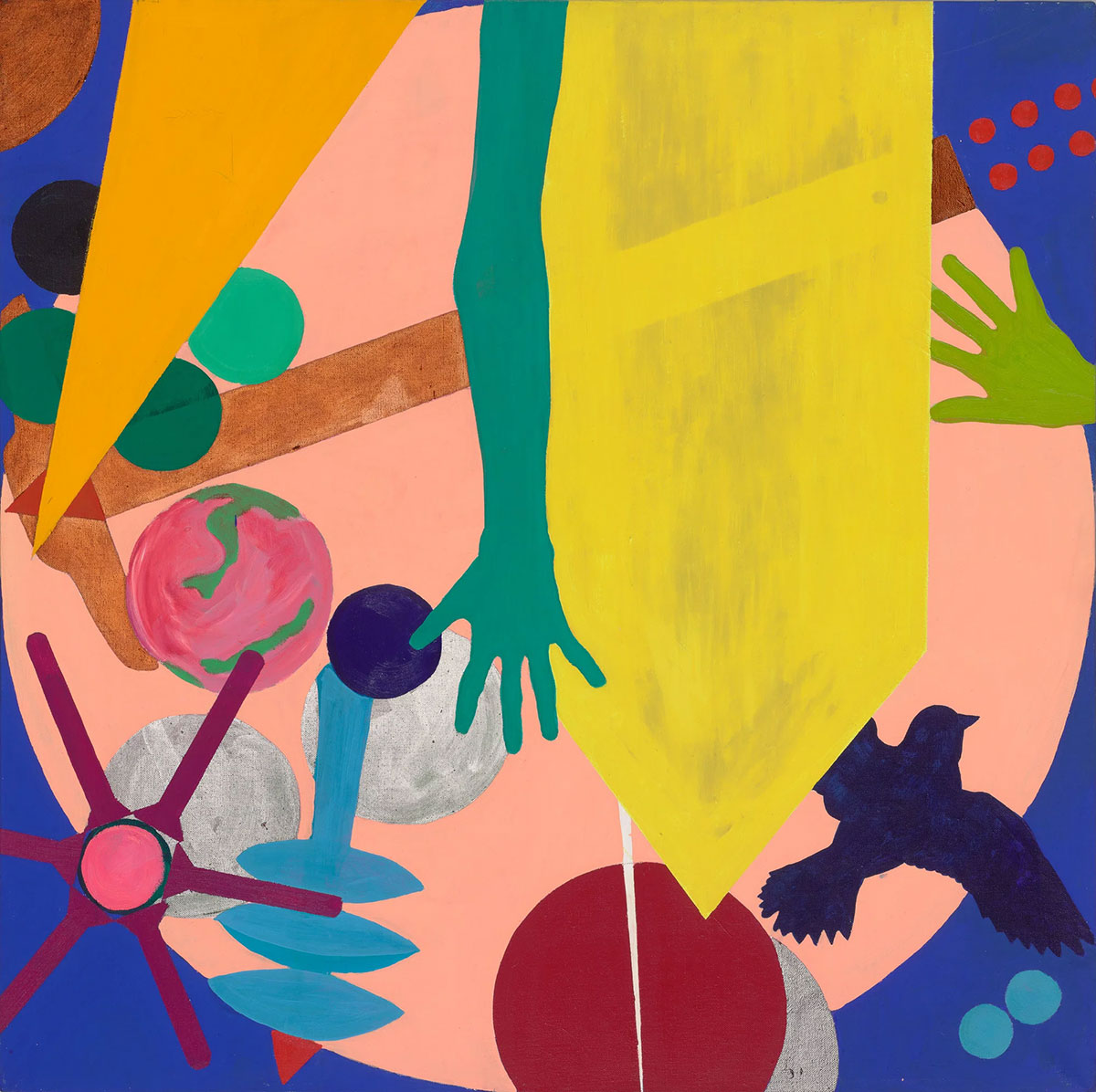
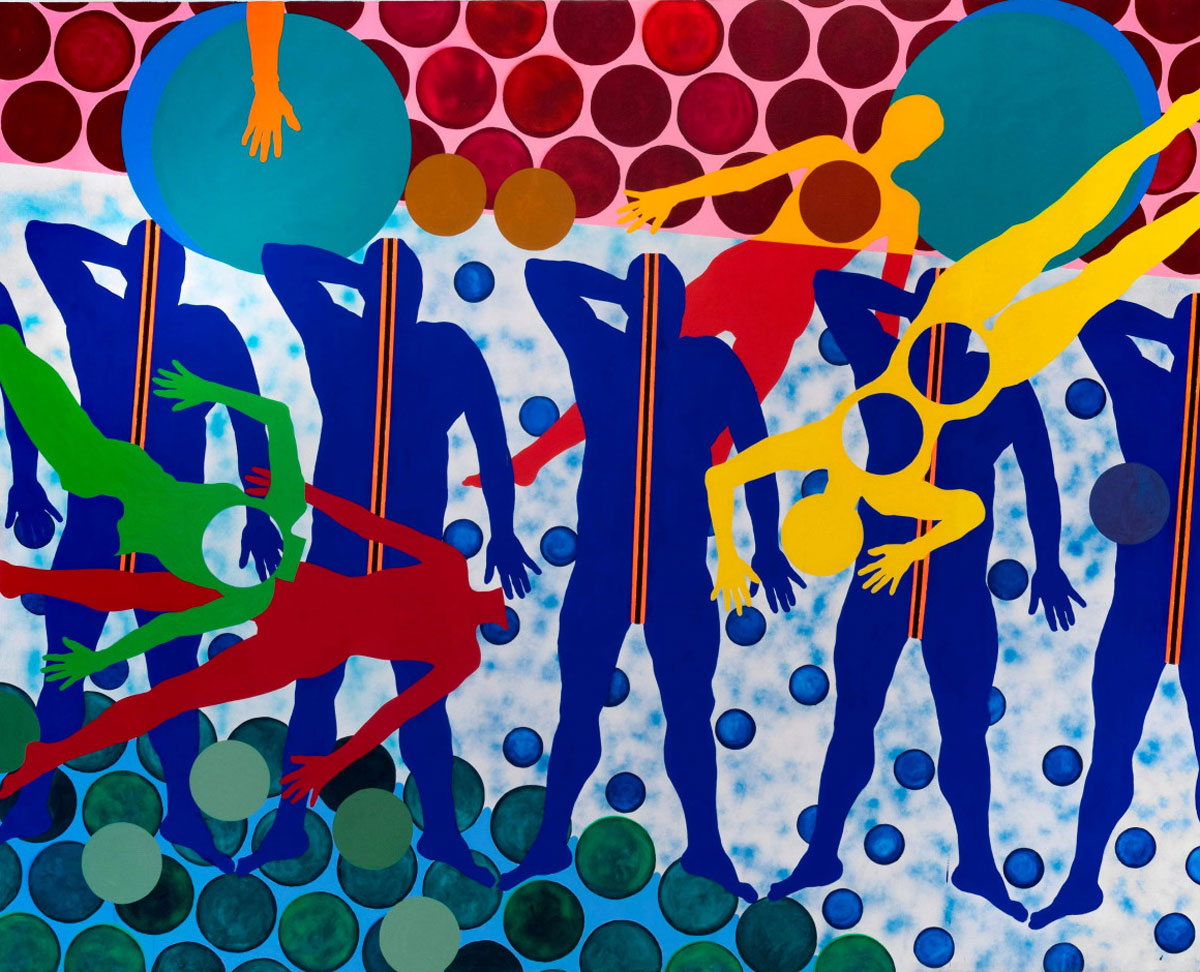
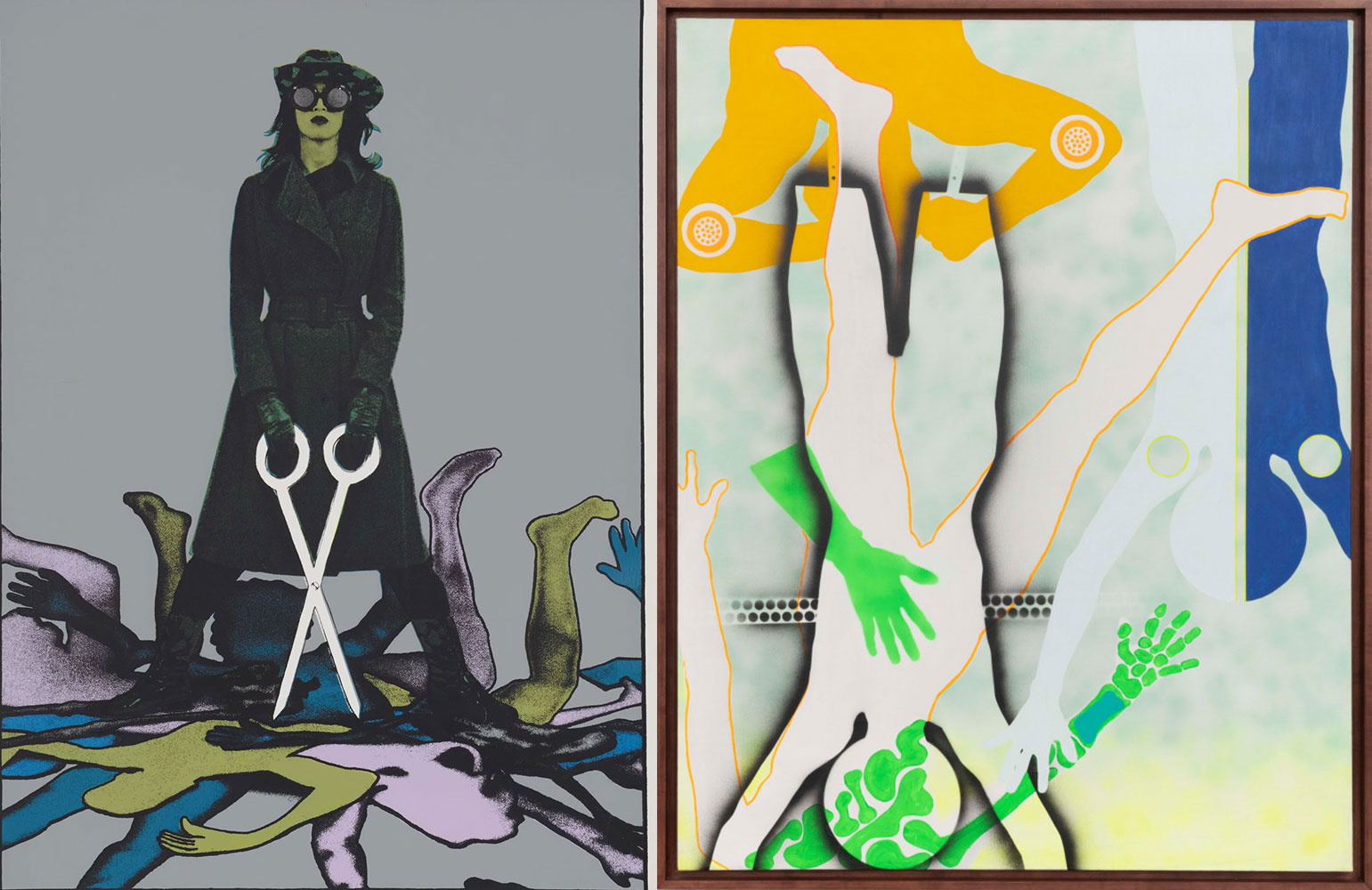
Right: Kiki Kogelnik, Cold Passage, 1964, Oil and acrylic on canvas, 59 3/4 x 48 in. (151.8 by 121.9 cm), © Kiki Kogelnik Foundation, Courtesy Kiki Kogelnik Foundation & Art Museum Brandts
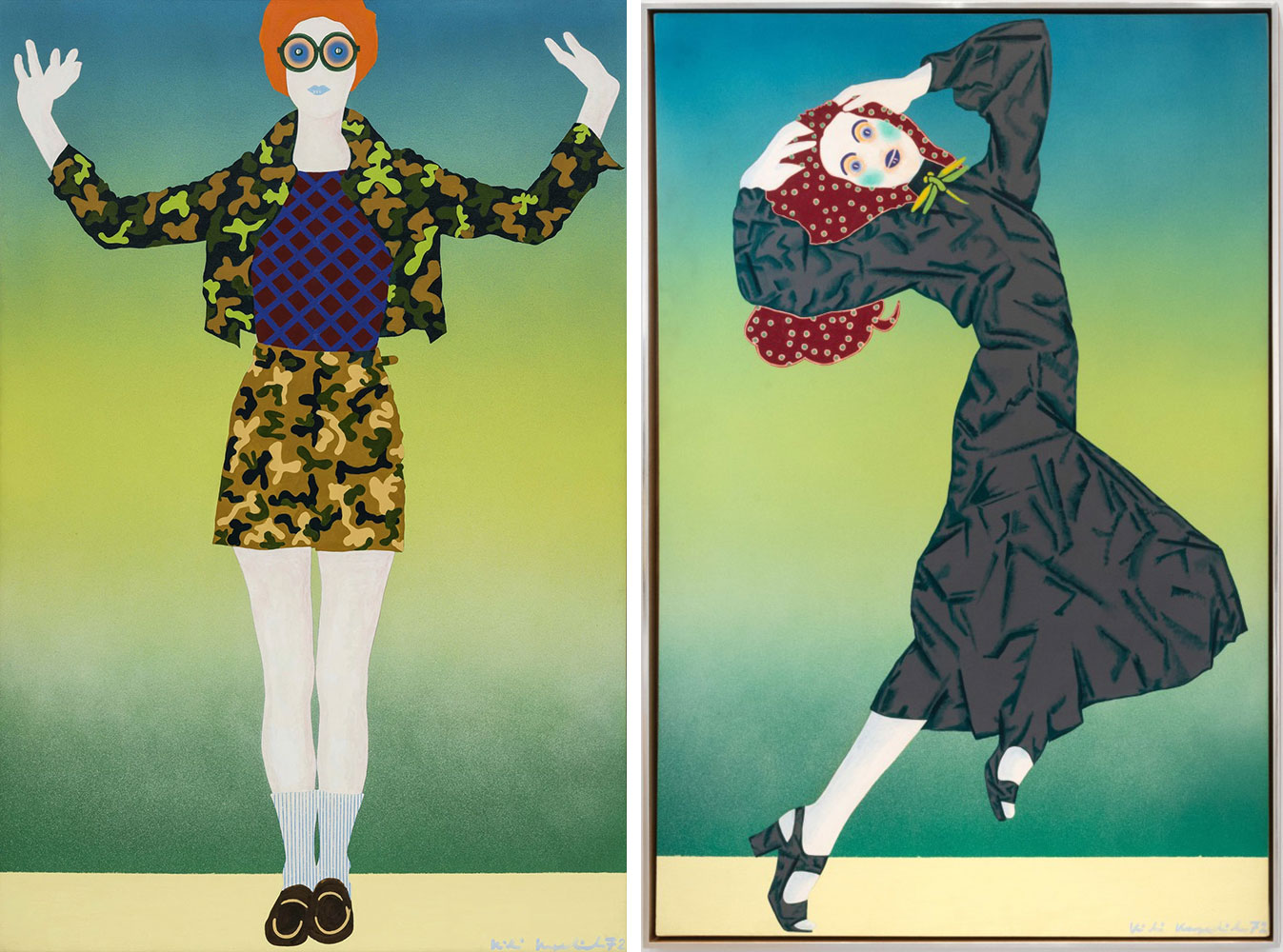
Right: Kiki Kogelnik, Dynamite Darling, 1972, Oil and acrylic on canvas , 72 x 48 in. (182.9 x 121.9 cm), © Kiki Kogelnik Foundation, Courtesy Kiki Kogelnik Foundation & Art Museum Brandts
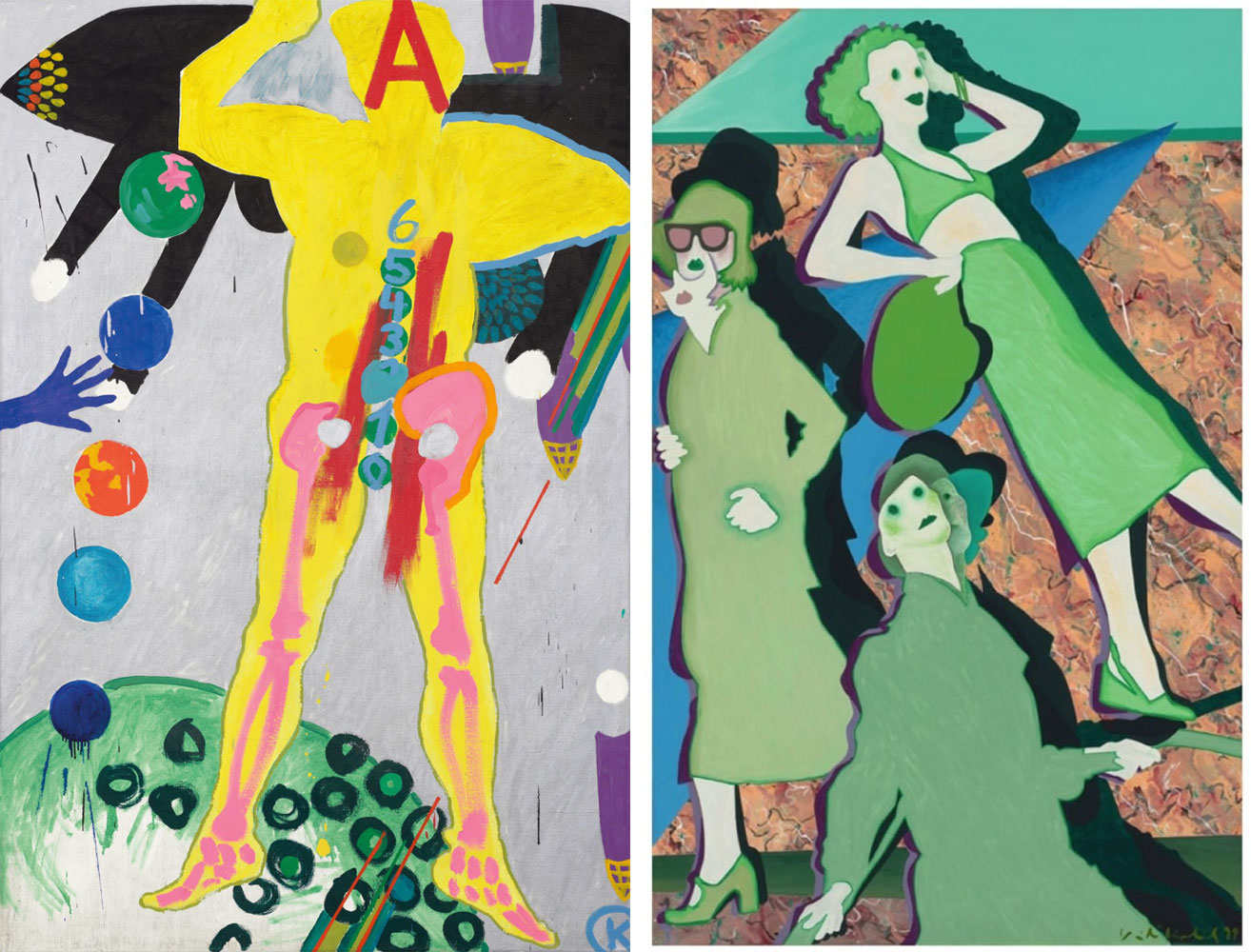
Right: Kiki Kogelnik, City, 1979, Oil and acrylic on canvas, 98 5/8 x 63 1/8 in. (250.6 x 160.3 cm), © Kiki Kogelnik Foundation, Courtesy Kiki Kogelnik Foundation & Art Museum Brandts
